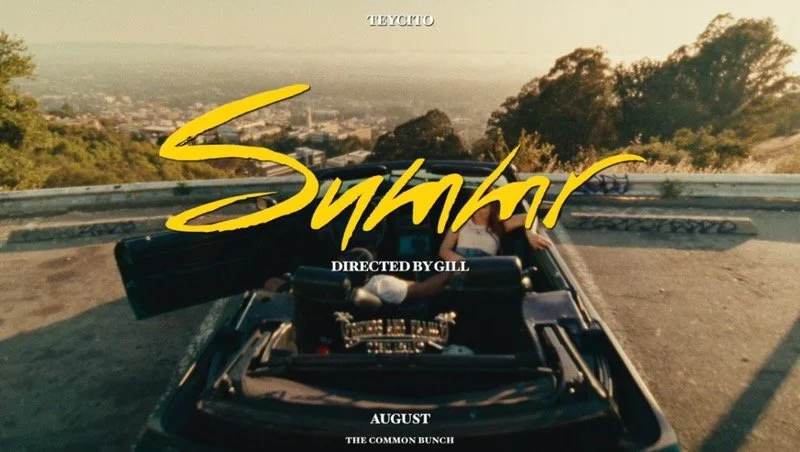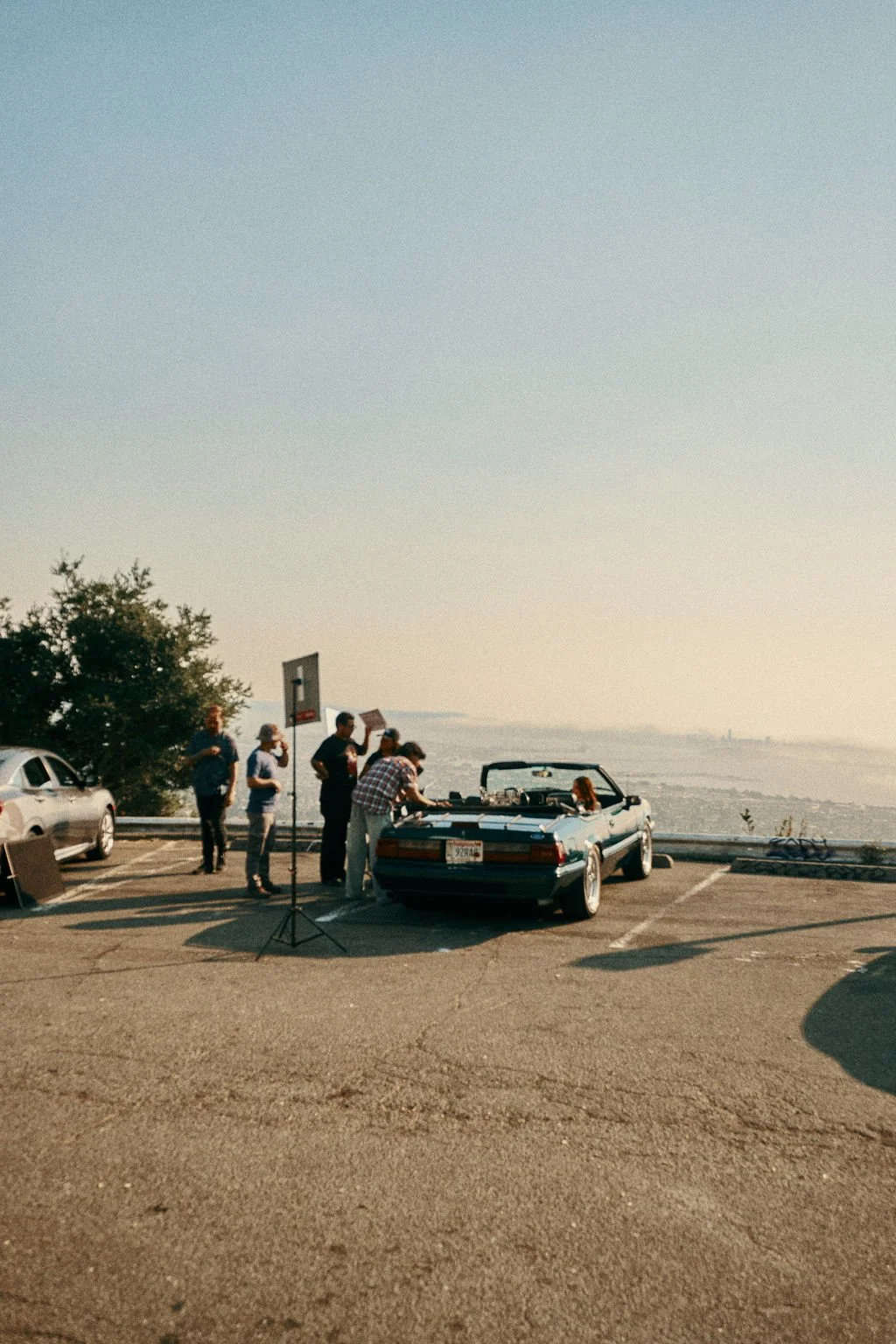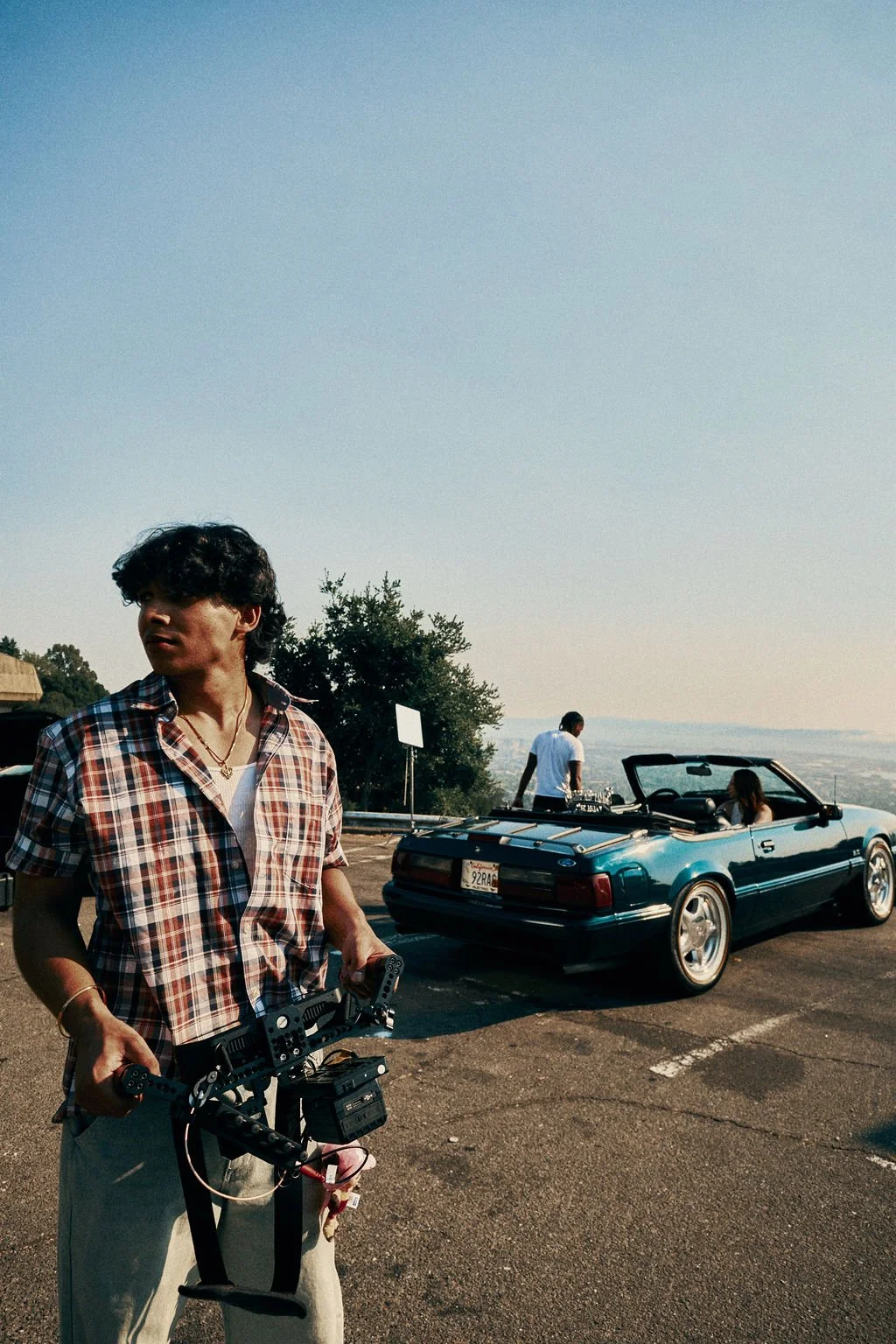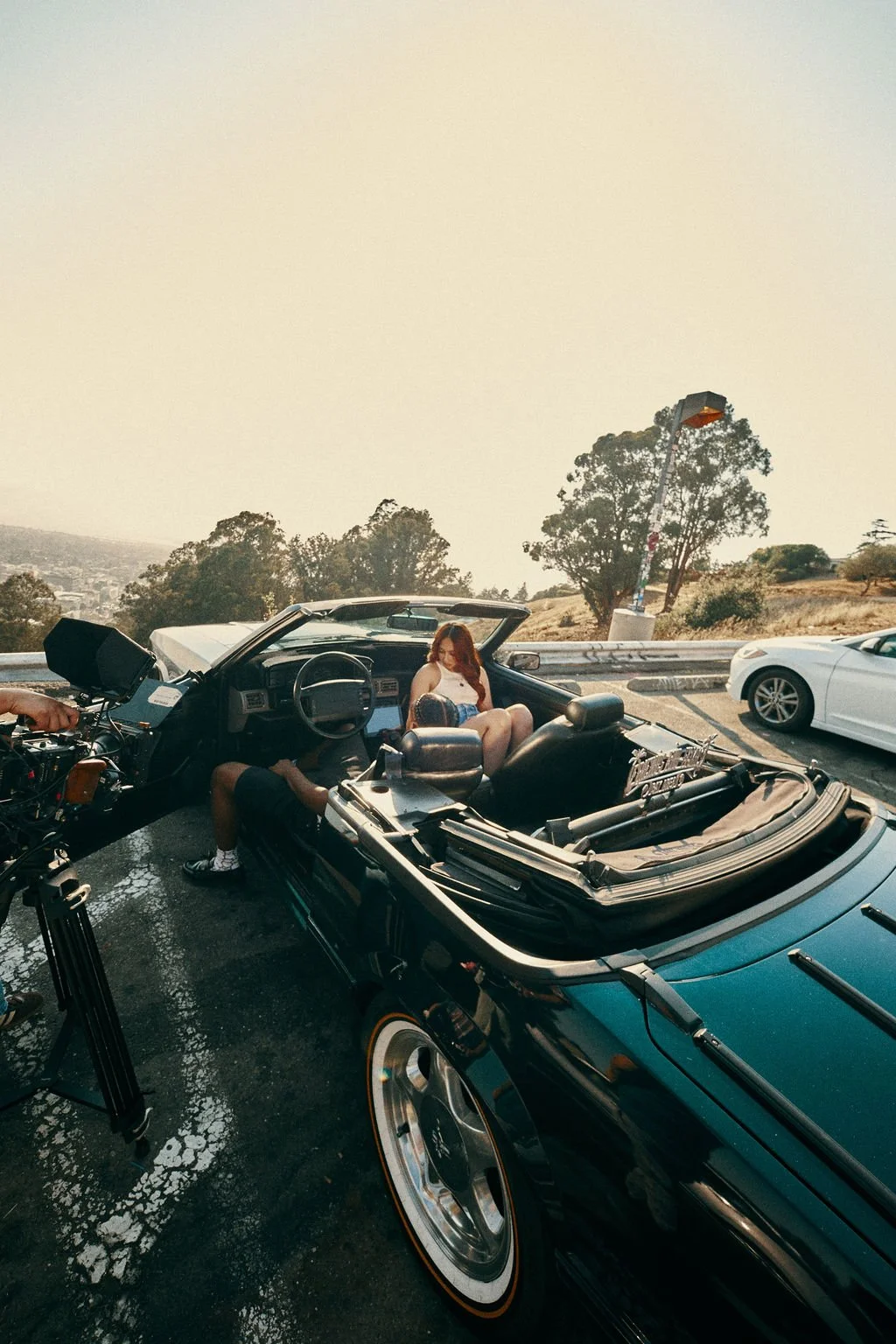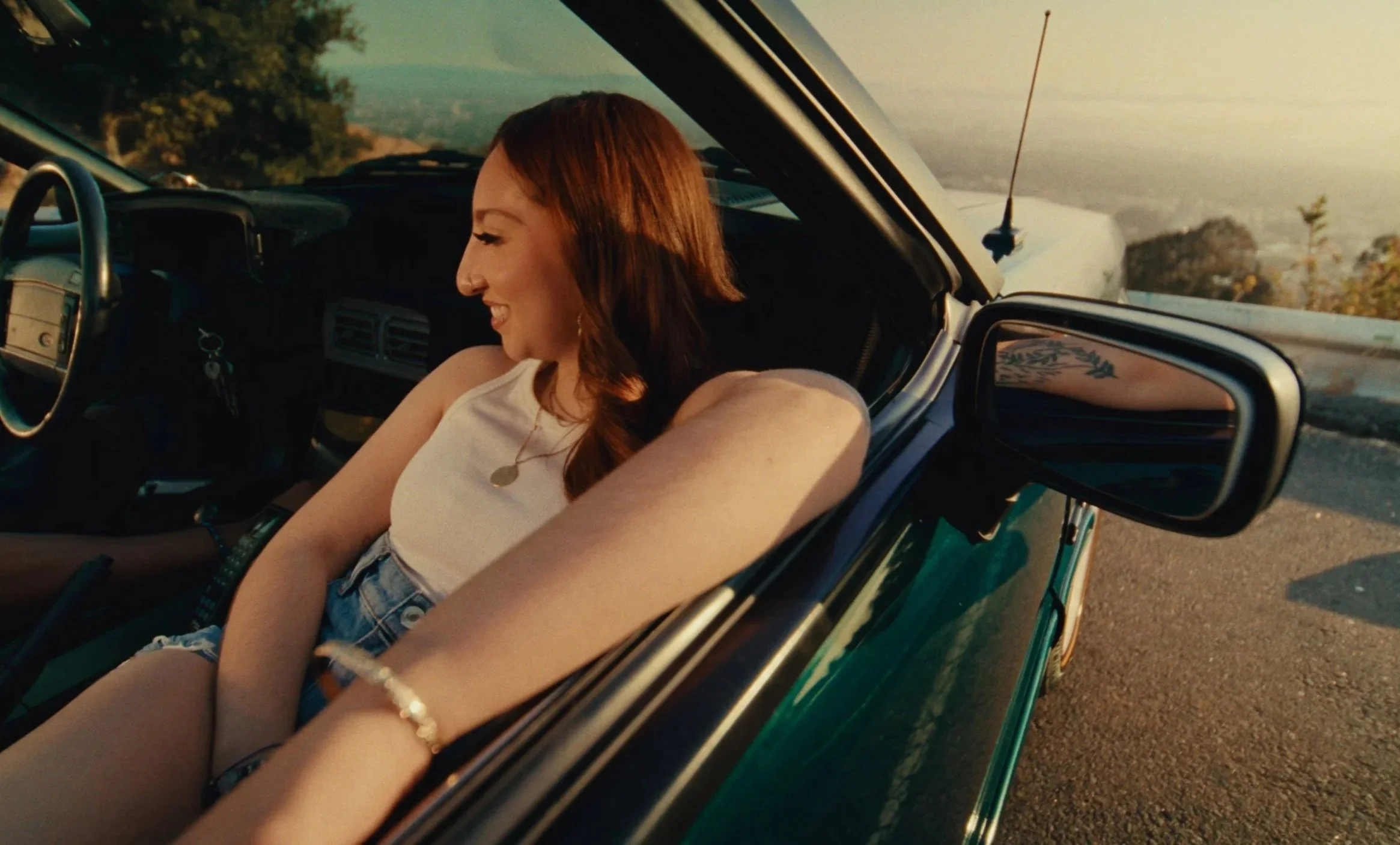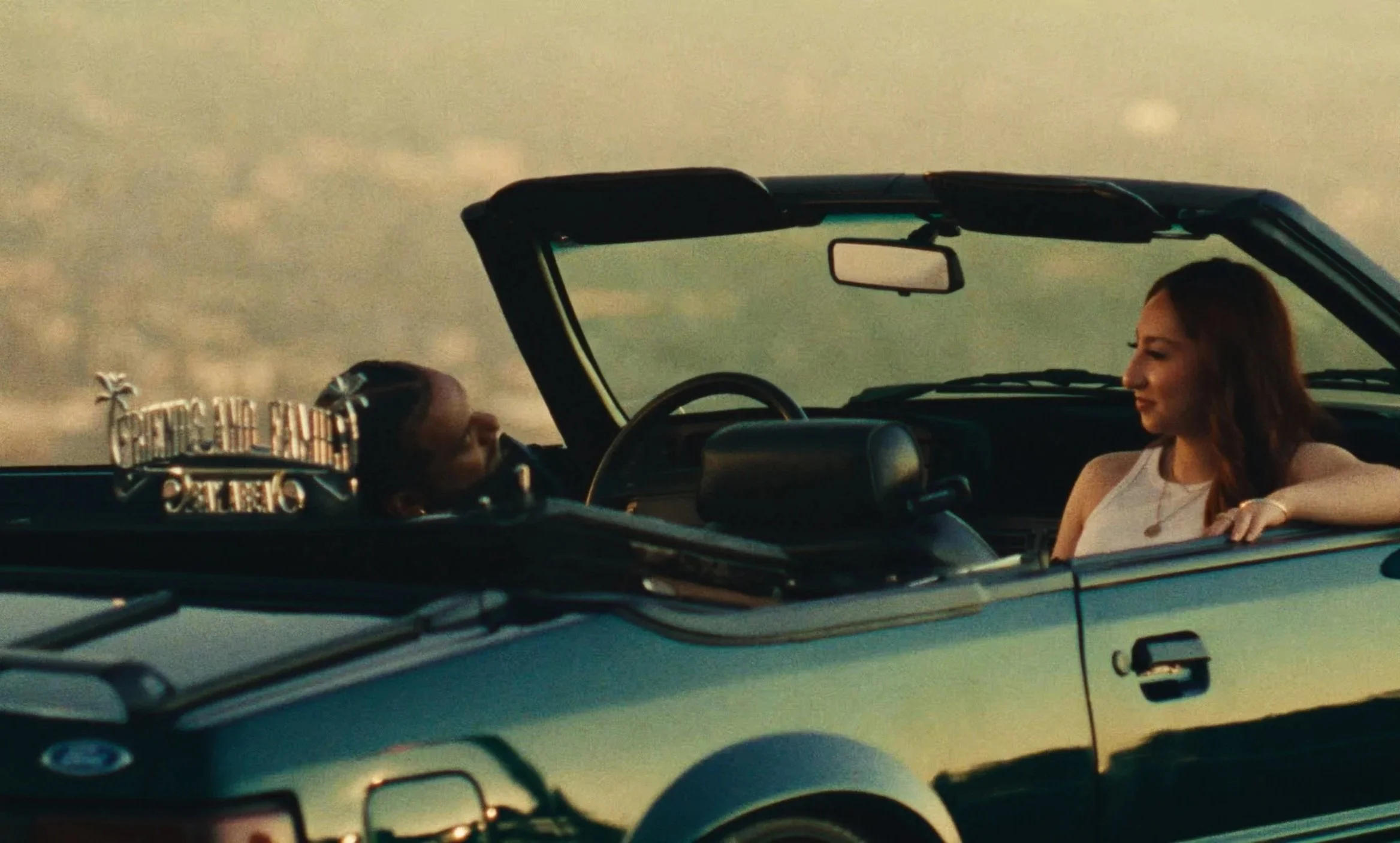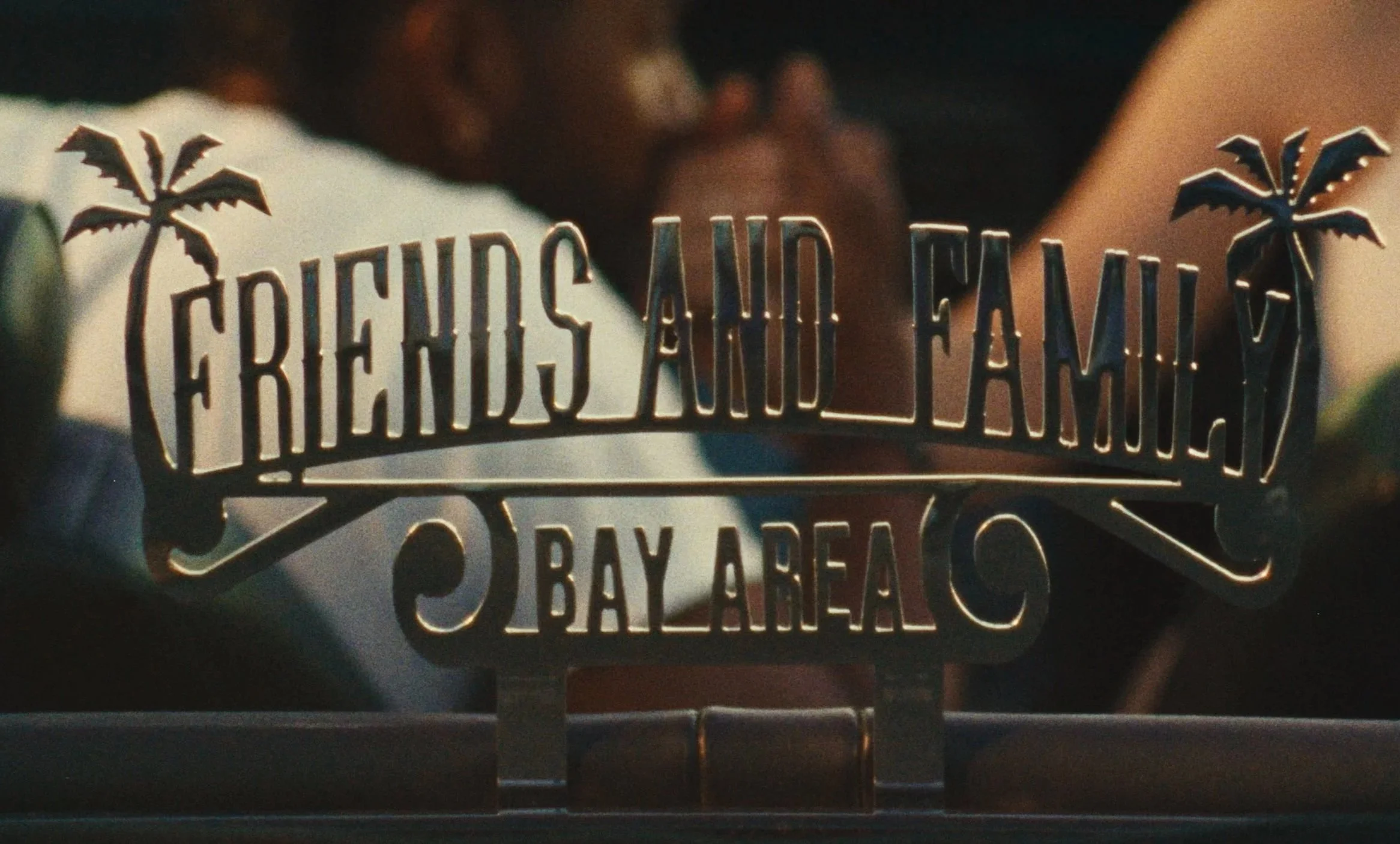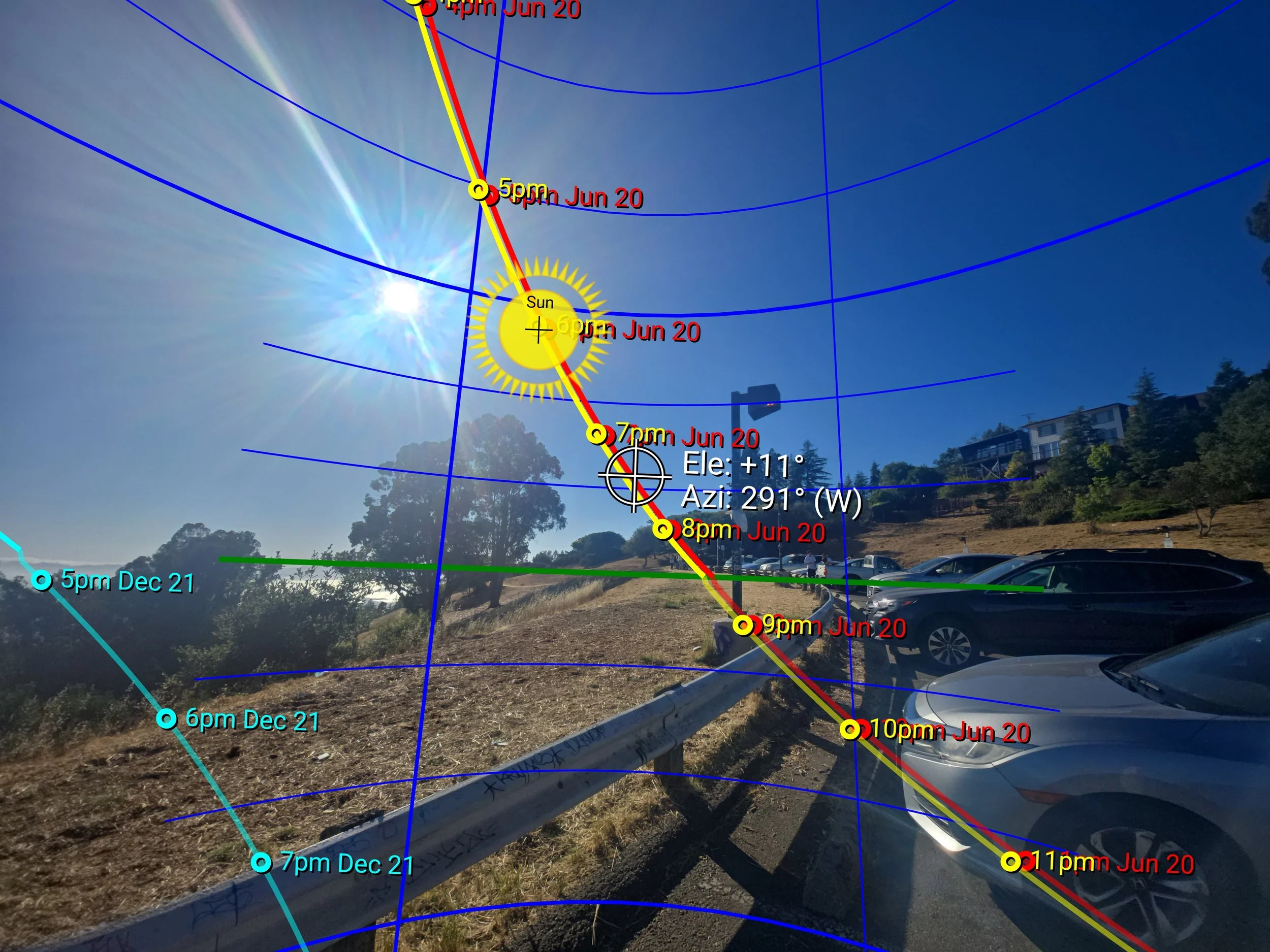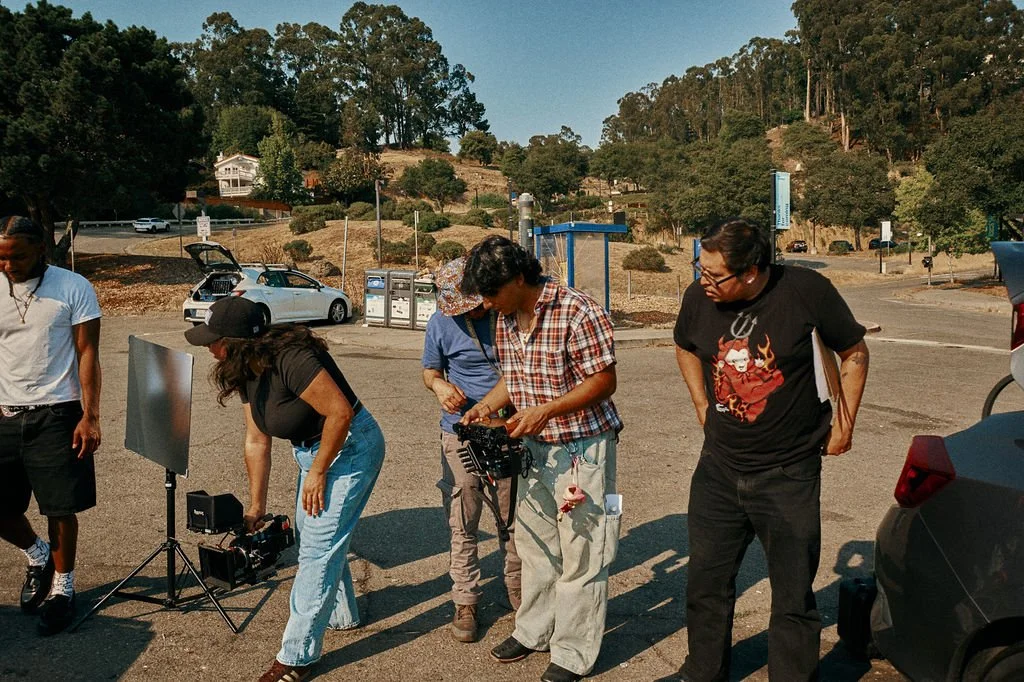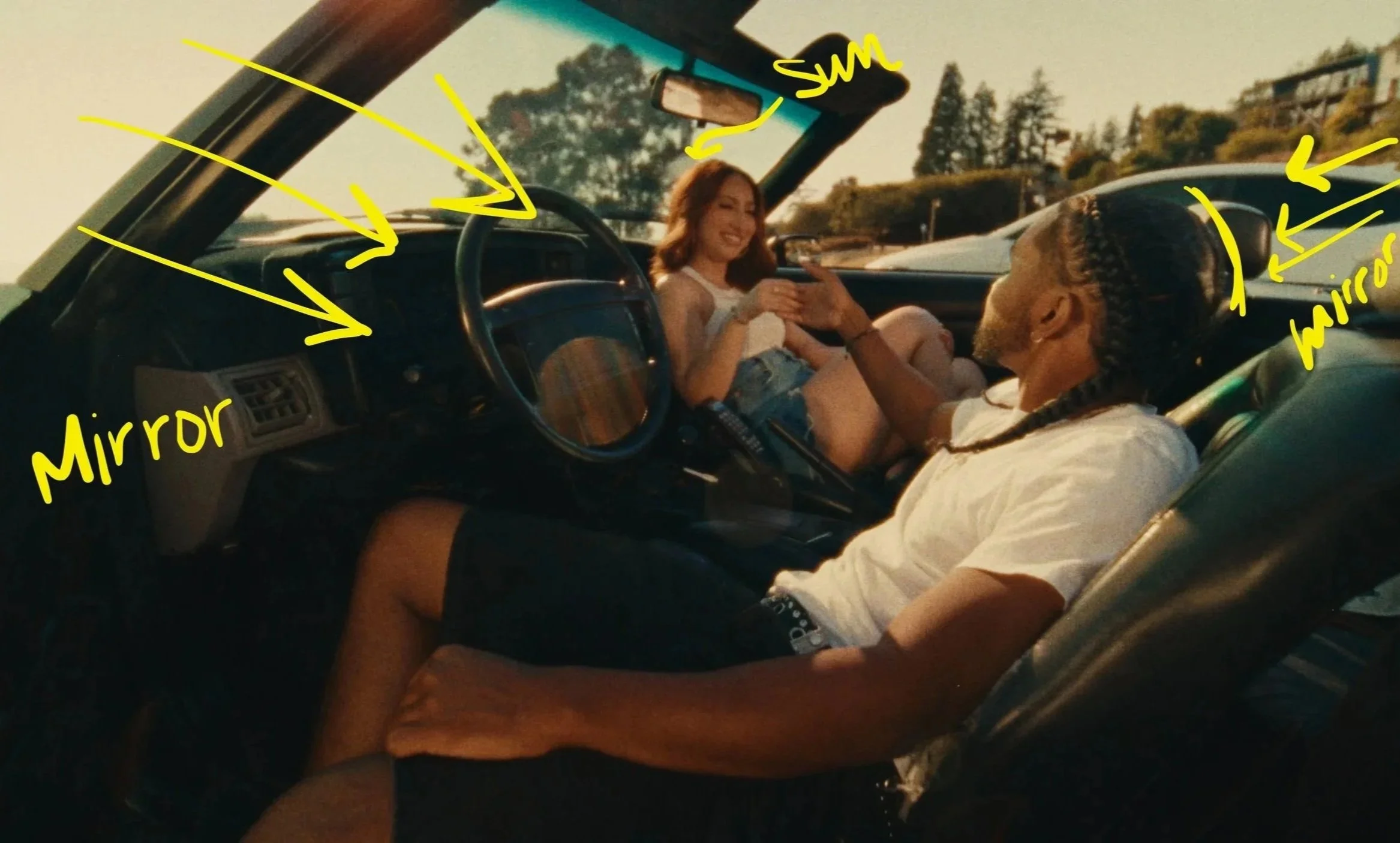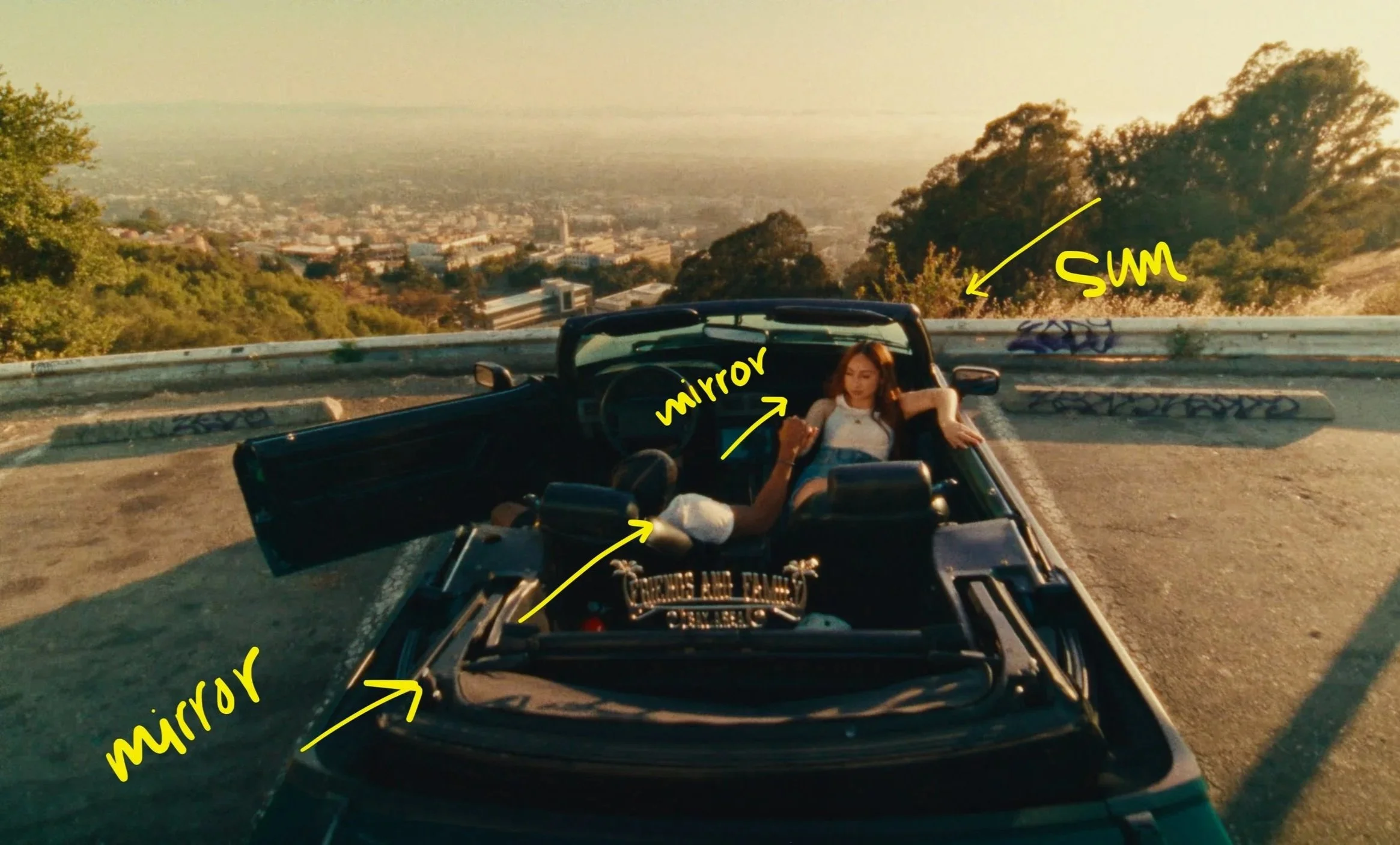Shooting a Music Visualizer on a Limited Budget
A Sunset Vibe
Budgets shape everything. Sometimes you’ve got resources to play with and sometimes you don’t. That doesn’t mean the work has to feel small. For Bay Area artist Teycito’s new album Summr, we set out to create a music visualizer that captured the warmth and intimacy of the record. We didn’t have permits or big lights, but we did have a sunset, a hillside, and a crew ready to experiment.
This was my first time collaborating with Gil as a director. We usually work together on editing projects, but he’s been wanting to step into directing more. He came in with this “summer nights” vision, full of big and beautiful ideas, and my role as DP was to help bring that to life without breaking the bank.
When I first heard the idea, my mind went straight to those old-school 2000s music videos. Lowriders, city skylines, cozy summer vibes. It felt like a chance to make our own small version of that energy. For me, that meant taking Gil’s vision and figuring out how to make the light, the space, and the mood all work together.
Summr at Golden Hour
The idea was simple. Tey in a lowrider with his partner Karla, parked at Grizzly Peak in the Berkeley Hills as the sun dipped low. The car wasn’t just a prop, it was a stage for intimacy and rhythm. Tey was the focus, but Karla’s presence grounded the scene. The way they leaned into each other, framed by the city behind them, said it all. He’s her world, she’s his, and Summr is the soundtrack.
We kept the shoot lean, less than ten setups total. Each one gave us flexibility without overcomplicating things. That let us stay in the moment and let the light do the heavy lifting.
Framing the Subjects
During our scout we spent a lot of time figuring out how to frame both Tey and Karla. The artist is always the priority, but I wanted her to feel just as present. Not like background talent, but part of the scene.
After testing a few setups, we landed on having her lean back against the glove compartment, facing him. That one choice gave us a really tender summer-evening dynamic. Like they were each other’s whole world and everything else was just noise. I honestly think that single decision made the final video feel more intimate.
Lens Choices
Because we wanted this project to feel more stylized, Gil and I did extensive research on the type of wide angle lens we wanted to use for about 80% of the shots. We ended up renting a Venus Optics Laowa 12mm T2.9 (Shout out Lensrentals for the quick shipping!) Since I was shooting on a RED Komodo with a Super 35 sensor I wanted a cinema-grade wide-angle lens that would cover the sensor without heavy vignetting and maintained sharpness across the frame. Originally, I wanted the flexibilty of a wide angle zoom and was even pushing Gil for us to get the Venus Optics Venus 8-15mm T2.9 for its crazy cool dual fish eye effect but we decided this wasn’t the right project for it.
The Laowa 12mm was actually an incredibly beautiful lens that I really didn’t want to return after the production was over. I loved the minimal distortion it created around the edges of the frame. I also loved the soft flares it would create in certain shots. In my opinion it was perfect for the kind of shots we wanted to accomplish.
Aside from using this beautiful wide angle lens I also whipped out my recent lens purchase from Ironglass, the soviet rehoused MKII’s. There were only a few shots I really wanted them for, specifically for the long shot looking out to the Bay and a few other tight cut aways. I ended up using the TAIR-11A 135mm T2.9 that gave the shot beautiful depth and texture. As you can see in the photo to the bottom left, we were already losing sun on our subjects, and these shots were honestly the last ones we shot before calling it a wrap.
The Approach: Sun and Mirrors
What I loved about this project is how it pushed me to be resourceful. We didn’t lean on gear or budget the way I normally do. Instead, we leaned on the sun and some mirrors. It reminded me that constraints can actually sharpen creativity. And honestly, sometimes, less is more.
Since we didn’t have permits or a big lighting budget, we leaned on the biggest light source we had: the sun. To make it work, we scouted Grizzly Peak a week in advance, tracked the light, and picked our window: 4:30 to 7 PM.
Thanks to the Sun Seeker app, I was able to determine the sun’s trajectory and more importantly where the sun would land so that I could decide the best parking spot for the lowrider. This location was super interesting because if that tree didn’t block the light at 7 PM, we would have probably had at least another half hour before completely losing the sun. But that’s what we were dealt with and we tried to make the most of it.
On the day of production, we showed up at 2 PM, blocked a few parking spots, and started prepping gear.
The Godox Mirror Kit became our secret weapon. Mirrors aren’t something I’d bring to a run-and-gun shoot simply because they take time, planning, and patience. But I would be lying if I said I hadn’t been itching to try them out. They allowed us to be stylized instead of just “dealing with” the sun.
Since we had space in the lot, we could move the mirrors around to bounce and soften light right where we wanted it. Most of the time, that meant shaping light onto faces to keep things looking natural but still elevated.
I wanted to share what that looked like from our perspective. The Director had a very clear vision of the framing he wanted after our location scout, which honestly made my job so much easier with my gaffer, Phil. We wanted the Bay Area to be the backdrop, so that meant the sun would be Tey’s key light and Karla’s backlight.
Our mirror placement for the first shot was pretty simple. We opted to have a mirror camera left in order to add some extra fill into Tey’s face and to brighten up the wheel and his seat. I just wanted a kiss of light to help it feel more natural. And if you look closely, you can even see a shadow on Tey’s face coming from the sun hitting the windshield of the car. Did I love it? No. But I also acknowledge that it helps give the natural texture I was looking for in the first place. One thing I loved was the subtle flare the sun gifted me. (I’m a big fan of flares when they feel natural and subtle!)
We then placed another mirror behind the car, specifically camera right to help create a hair light on Tey. This same mirror helped bounce a subtle amount of light onto Karla, and helped create that cozy, lovey, summer vibe.
Next on our shot list was showing off the beautiful Bay Area view. Unfortunately, that day ended up being a mixture of clouds and fog, so it was hard to see the city. In addition to that, because we didn’t have a ton of control of the space, I was stuck with that massive bush seen camera right. I’m a fan of symmetry and I would have loved to have that bush further to the right almost hugging the edge of the frame, so that the car, would be perfectly centered and balanced against the view. Nonetheless, we made it work with a high wide angle shot of the car filling up two thirds of the frame and the final upper third being just the view.
As far as mirror placement went, we only used the largest mirror we had in the kit and placed it at least five feet to the left of the back of the car. Catching the sun perfectly to give Tey a hair light and Karla some nice fill on her face.
I’ll be honest, the sun did a lot of the work on this project, but the mirrors helped the talent pop even more.
From the Director’s Chair
Collaboration was the heartbeat of this project, and I wanted to bring Gil’s voice into this post as well. He came in with the vision and led with that “summer nights” energy, so I asked him a few questions about how he sees the director–DP relationship and how our work together shaped this visualizer.
How did our collaboration influence and refine your original vision for the project?
Gil: Collaboration helps you understand what’s really possible within the capacity of your efforts. It’s hard to hold every detail of your vision in your head while also trying to create something new. Having someone else there allows you to build on top of what you already imagined and push it further.From your perspective, how did the cinematography shape the story you wanted the visualizer to tell?
Gil: “Cinematography helps define what tools you need to tell the story you want. It’s not just about chasing cool shots, it’s about guiding the viewer’s eye so the feeling and tone come across. I value aesthetics and tone maybe more than I should, but that’s part of my style. For me, cinematography has to feel immersive, which makes it a crucial part of my process.”What do you value most about working closely with a DP, and how did that play out on this project?
Gil: “A DP helps me articulate what I’m thinking, like a companion focused purely on the visual side of the story. As a director, your mind is constantly spinning with ideas, so having someone there to keep you grounded is really important.”Were there moments where our collaboration on set shifted the direction of the piece in an unexpected way?
Gil: “Definitely. Some of the best ideas came unexpectedly while we were shooting. At one point, we started making little postcard-style stills of certain shots, and those inspired new directions. We ended up experimenting with focal lengths and subjects in ways we hadn’t planned, and it opened up a lot of fresh looks.”What did this project teach you about the relationship between a director and a DP that you’ll carry into future work?
Gil: “You taught me the importance of being prepared for deeper conversations. Planning and actually being on set are two very different experiences. For future projects, I want to have more detailed notes for myself so I can lead with clarity, even when things shift unexpectedly. There’s so much riding on you as a director, and having a DP by your side is invaluable. But it also means coming prepared and supporting your DP in their process too.”
Final Thoughts
Looking back, what I love about this shoot is how it reminded me that budget doesn’t define creativity. The limitations made me sharper and more intentional. With the right prep, the right crew, and a willingness to experiment, you can do a lot with very little.
For Summr, we didn’t need a big production. We just needed to capture that kind of intimacy you only feel on a hot summer evening with your partner. The Bay gave us the perfect backdrop, and the sun did the rest.
Most of my work lives in the documentary world, but projects like this keep me excited to pick up the camera. A simple story told with beautiful imagery: that’s the magic I want to keep chasing.
Production Company: The Common Bunch
Producer: Frank Facio
Director: Pratham Gil
Director of Photography: Jennifer Gonzalez
1 AC: Marcos Rocha
Gaffer: Phil Nguyen
Editor + Colorist: Pratham Gil
BTS Photo + Title Card: Arturo Zarco
BTS Video: @heymynameangel + Denzel Balingit
